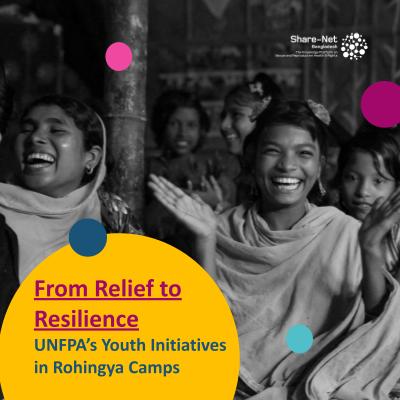From Relief to Resilience: UNFPA’s Youth Initiatives in Rohingya Camps
“Empowering young people is essential for a sustainable future,” says 13-year-old Jahura from the Rohingya camp in Cox’s Bazar.
This statement resonates deeply with the transformative initiatives undertaken by UNFPA in collaboration with the Korea International Cooperation Agency (KOICA) over the past two years. By establishing eight Adolescent and Youth Centers, they have reached over 16,215 individuals, focusing on the well-being and development of adolescents and youth in the Rohingya refugee camps.
Addressing Core Needs through Holistic Programs
These centers are designed with a mission to unlock the potential of Rohingya adolescents and youth. By focusing on Sexual and Reproductive Health and Rights (SRHR), Gender-Based Violence (GBV), and Menstrual Health Management, UNFPA aims to equip young people with the knowledge necessary to make informed decisions. However, while these objectives are laudable, the implementation and long-term impact of these programs warrant closer examination.
Girl Shine: Empowerment with Care
The “Girl Shine” program, which educates adolescent girls and their caregivers about sexual and reproductive health, stands out as a significant initiative. It aims to build confidence and resilience among young girls. While the program’s intent is noble, its success largely depends on the continued engagement and cultural acceptance within the community. Ensuring that these young girls can translate their newfound knowledge into practice amidst traditional societal norms remains a critical challenge.
Champions of Change: Transforming Attitudes
Similarly, the “Champions of Change” program seeks to instill respect and positive social norms among boys and young men. By encouraging a culture of equality, this initiative addresses the deep-rooted issues of gender-based discrimination. However, changing long-standing attitudes and behaviors is a gradual process that requires sustained effort and reinforcement beyond the confines of these programs.
Beyond the Classroom: Holistic Engagement
The comprehensive approach of these centers, which includes community engagement, sports, theater for development, and mental health support, is commendable. These activities are designed to provide a well-rounded experience for the youth. Yet, the effectiveness of this holistic engagement is contingent on consistent participation and the availability of resources. The success stories are promising, but scalability and sustained impact remain areas for critical evaluation.
Youth-Driven Spaces: Creating Ownership
One of the most promising aspects of these centers is their foundation on the expressed needs of the Rohingya youth. Providing safe spaces where young people feel heard and involved in decision-making processes fosters a sense of ownership and empowerment. Nevertheless, ensuring that these spaces remain inclusive and accessible to all segments of the youth population is essential for their continued success.
Breaking Menstrual Taboos: A Long Road Ahead
The focus on menstrual health management is a critical component of these initiatives. By providing menstrual health kits and educating girls on making reusable pads, the centers aim to break longstanding taboos around menstruation. While this is a significant step forward, the deep-seated cultural stigmas associated with menstruation require ongoing education and community-wide acceptance to effect lasting change.
Conclusion: Toward a Sustainable Impact
UNFPA’s Youth Centers in the Rohingya refugee camps are pioneering efforts to transform the lives of young people through education and empowerment. While these initiatives have made notable strides, their long-term success hinges on addressing cultural barriers, ensuring sustained community engagement, and securing continuous support from stakeholders like KOICA. As these programs evolve, a critical reflection on their impact and adaptability will be crucial in fostering a brighter and more equitable future for the Rohingya youth.
Source: ReliefWeb Bangladesh
Source Contributor: Nusrat Mahmud Ananna/UNFPA
Picture Credit: ReliefWeb Bangladesh


